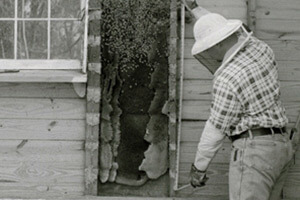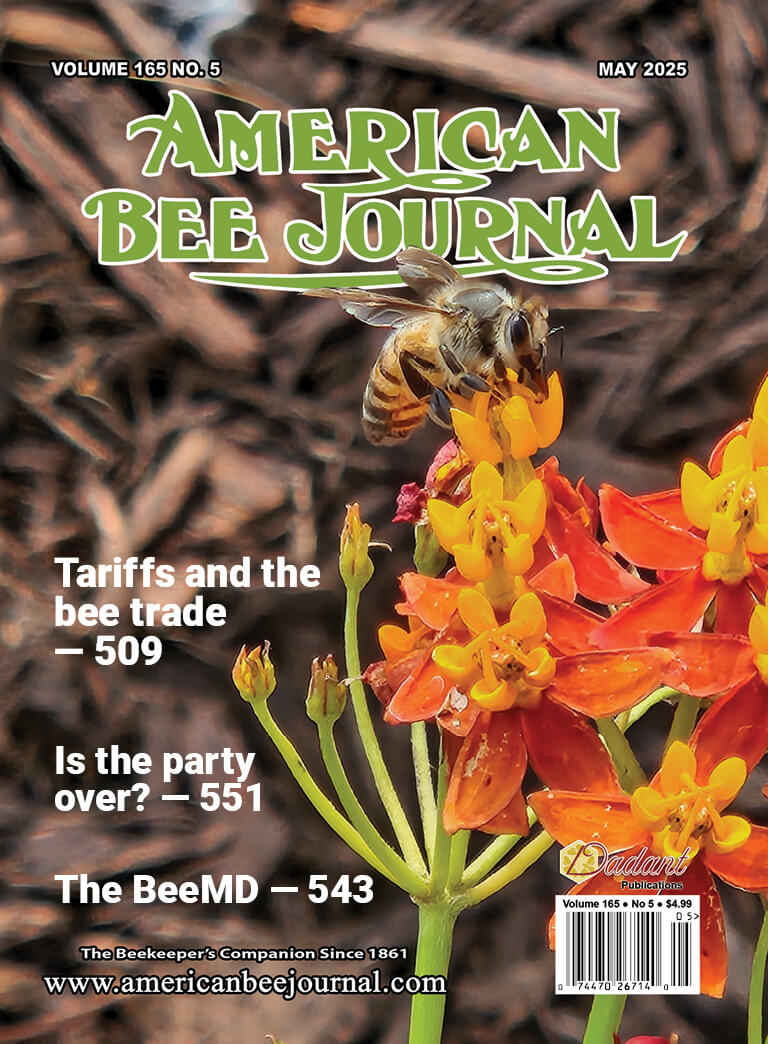
It’s part of the mythology of beekeeping, a compelling story that we want very much to be true. It comes up in hallway discussions and in the Q&A time after lectures on sustainable beekeeping. It evokes an image of a simpler time when beekeeping wasn’t much more than controlling swarms and supering up for the honey flow. I’m talking about reports of long-lived wild bee colonies. It’s usually a bee tree with a long record of activity: “This bee tree’s been here since Grandpa’s time.” Of course the standard answer is Yes that’s interesting, but we have no way of knowing if it’s an uninterrupted colony – one expressing a continuous line of genetic descent. Such an interruption would be easy to miss. All it takes is for a colony to die out in winter and a new swarm take its place, reoccupying the cavity. To a casual observer it would appear unchanged from the previous season. If there was time in between for wax moths to clean out the old combs, all the better as now the new swarm is the beneficiary of a clean cavity.
But the myth persists, and one reason, I believe, is because it hints at the holy grail of immortality, and who of us is immune to that siren song? And if there were ever an organism for which such a promise seems likely, the honey bee colony fits the bill with its habit of reproductive fission – colony splitting via the annual swarm – placing it in the same category of organisms that reproduce by budding, like the so-called immortal hydra.1 Even the great sociobiologist E.O. Wilson lumped honey bees with other social insects, army ants and stingless bees, into those he deemed “immortal” on the basis of this reproductive strategy.2 And after all, what’s to keep a colony from dying once it’s settled into a snug cavity surrounded by reliable nectar and pollen plants that bloom year after year and your evolutionary environment happens to not include such modern threats as Varroa mites and pesticides?
We will come back to that question in a moment, but for now let’s step back and ask why should the honey bee superorganism, or any organism for that matter, die at all? If evolution is all about maximizing the delivery of one’s genes to the next generation, how can senescence and death possibly contribute to that plan? The hydra accepted, but why isn’t Earth positively teeming with immortals?
Let’s eliminate the easy answers first. To begin, organic life on this planet is predicated on the capture and transfer of energy up and down food chains or webs. Primary producers are plants that capture the sun’s energy and convert it to carbohydrates. Plants are in turn eaten by herbivores, who are eaten by carnivores, and so on, up to the apex predators who in turn are eaten by decomposers who disintegrate their bodies, returning their elemental constituents to the nutrient web. Not to put too fine a point on it, but organisms on this planet eat one another. One might say that death is engineered in. But that also means that death is the seedbed for ongoing life.
Mortality also enters the picture when genomes compete for limited resources. Resource limitation is a huge selection factor – whether for food, nesting sites, or mates – and the jostling of natural selection means that some individuals, and whole lineages, are out-competed and die. And finally we must point out the obvious fact that life is full of dangers that have nothing to do with food webs or competition. Organisms die from ordinary day-to-day hazards and from unpredictable catastrophes like world-colliding meteors, volcanoes, and climate change.3
That things die is hardly a point worth defending. But what about senescence? Getting old? Why has evolution produced organisms that fall apart even if they manage to avoid predators, life-threatening competition, or meteors? At age 55 I’m beginning to think about this with more than just academic interest.
If evolution is a general explanation for what we see in living things, then it should be able to …
Photo Caption
Brood production is higher on new first-year comb, and as a colony ages bees shift brood production to newer combs, relegating previous years’ brood combs to honey storage. However, as a colony reaches its cavity’s limit, bees may be forced to rear brood on sub-optimally older combs. Beekeepers can exploit this knowledge by culling out old, dark brood combs to keep brood production high. (photo credit: Jim Quick)


